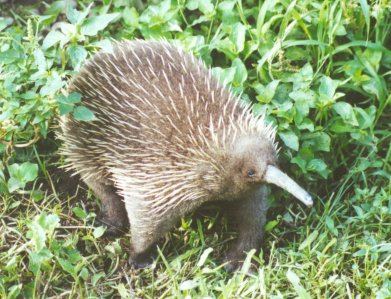Western Long-beaked Echidna (Zaglossus bruijni) - Wiki Western Long-beaked Echidna
From Wikipedia, the free encyclopedia
The Western Long-beaked Echidna (Zaglossus bruijni) is one of the four extant echidnas and one of three species of Zaglossus that occur in New Guinea. Fossils of this species also occur in Australia. As Tachyglossus bruijni, this is the type species of Zaglossus.
The Western Long-beaked Echidna is present in New Guinea, in regions of elevation above 1300m and up to 4000m, it is absent from the southern lowlands and north coast. Its preferred habitats are alpine meadow and humid montane forests. Unlike the Short-beaked Echidna which eats ants and termites the Long-beaked species eats earthworms. The Long-beaked Echidna is also larger that the Short-beaked species, it reached up to 16.5 kilograms, the snout is longer and turns downward, and the spines are almost indistinguishable from the long fur. It is distinguished from the other Zaglossus species by the number of claws on the fore and hind feet, it has three (rarely four) claws.
The species is listed as endangered by the IUCN, numbers have been decreased by reduced habitat due to human activities and hunting. The Long-beaked Echidna is a delicacy, and although hunting the species has been banned by the Indonesian and Papua New Guinean governments, traditional hunting is permitted.
In February of 2006, an expedition led by Conservation International reported finding a population of the mammals as part of what they described as a "Lost world" of wildlife in the Foja Mountains of Papua Province, Indonesia.
Platypuses and echidnas are the only known mammal species to lay eggs.
http://en.wikipedia.org/wiki/Western_Long-beaked_Echidna
| The text in this page is based on the copyrighted Wikipedia article shown in above URL. It is used under the GNU Free Documentation License. You may redistribute it, verbatim or modified, providing that you comply with the terms of the GFDL. |
